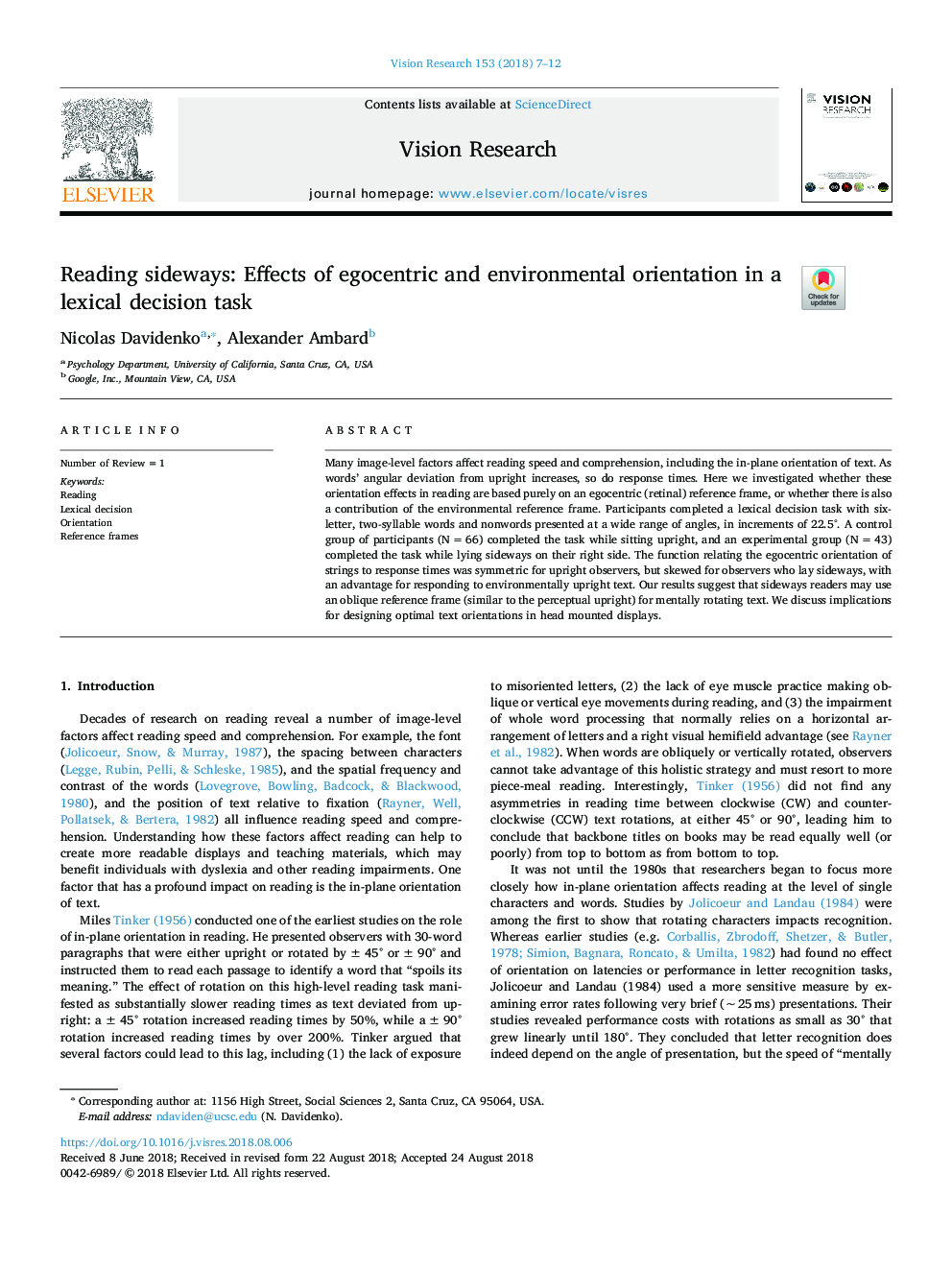| Article ID | Journal | Published Year | Pages | File Type |
|---|---|---|---|---|
| 10220995 | Vision Research | 2018 | 6 Pages |
Abstract
Many image-level factors affect reading speed and comprehension, including the in-plane orientation of text. As words' angular deviation from upright increases, so do response times. Here we investigated whether these orientation effects in reading are based purely on an egocentric (retinal) reference frame, or whether there is also a contribution of the environmental reference frame. Participants completed a lexical decision task with six-letter, two-syllable words and nonwords presented at a wide range of angles, in increments of 22.5°. A control group of participants (Nâ¯=â¯66) completed the task while sitting upright, and an experimental group (Nâ¯=â¯43) completed the task while lying sideways on their right side. The function relating the egocentric orientation of strings to response times was symmetric for upright observers, but skewed for observers who lay sideways, with an advantage for responding to environmentally upright text. Our results suggest that sideways readers may use an oblique reference frame (similar to the perceptual upright) for mentally rotating text. We discuss implications for designing optimal text orientations in head mounted displays.
Related Topics
Life Sciences
Neuroscience
Sensory Systems
Authors
Nicolas Davidenko, Alexander Ambard,
